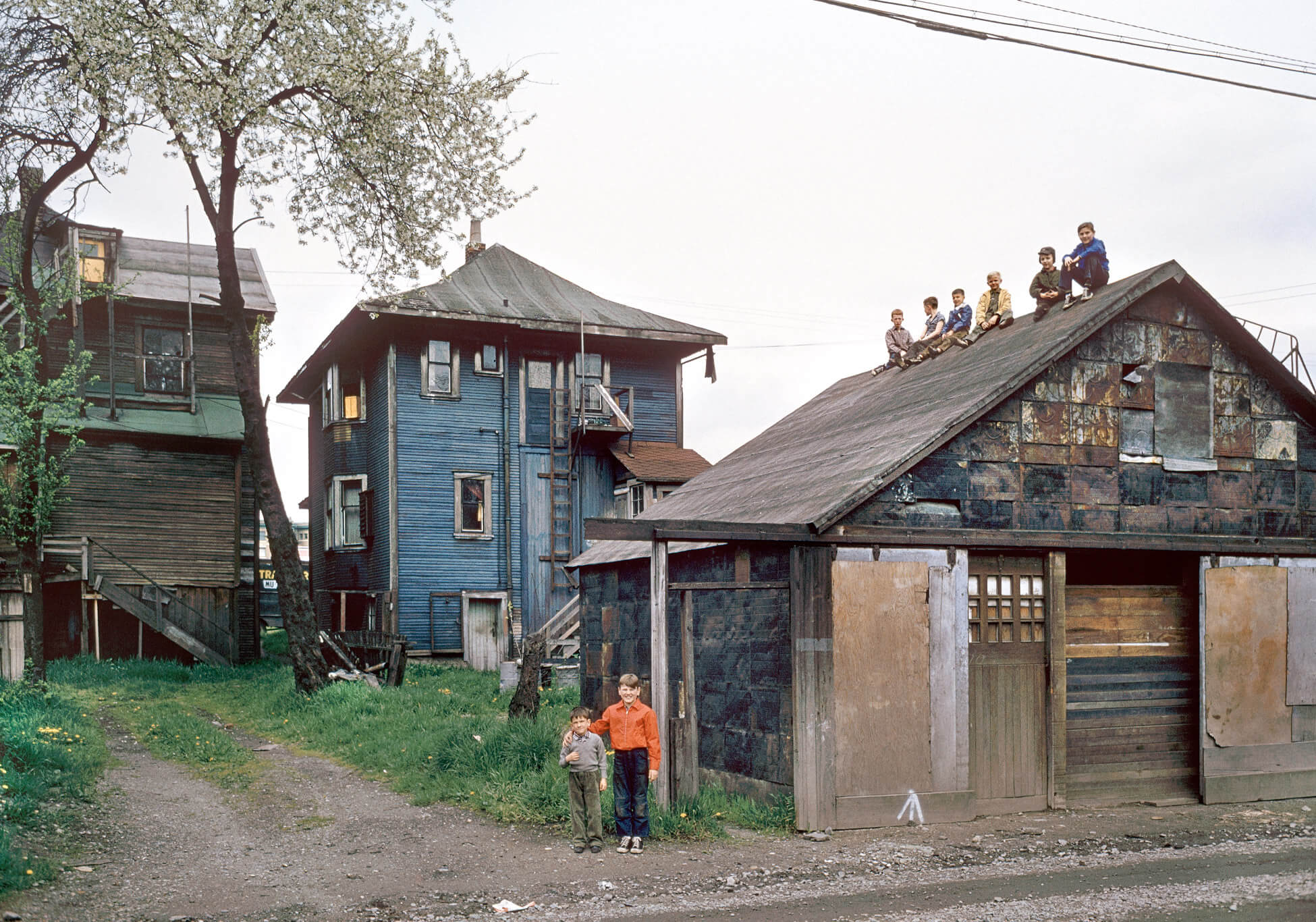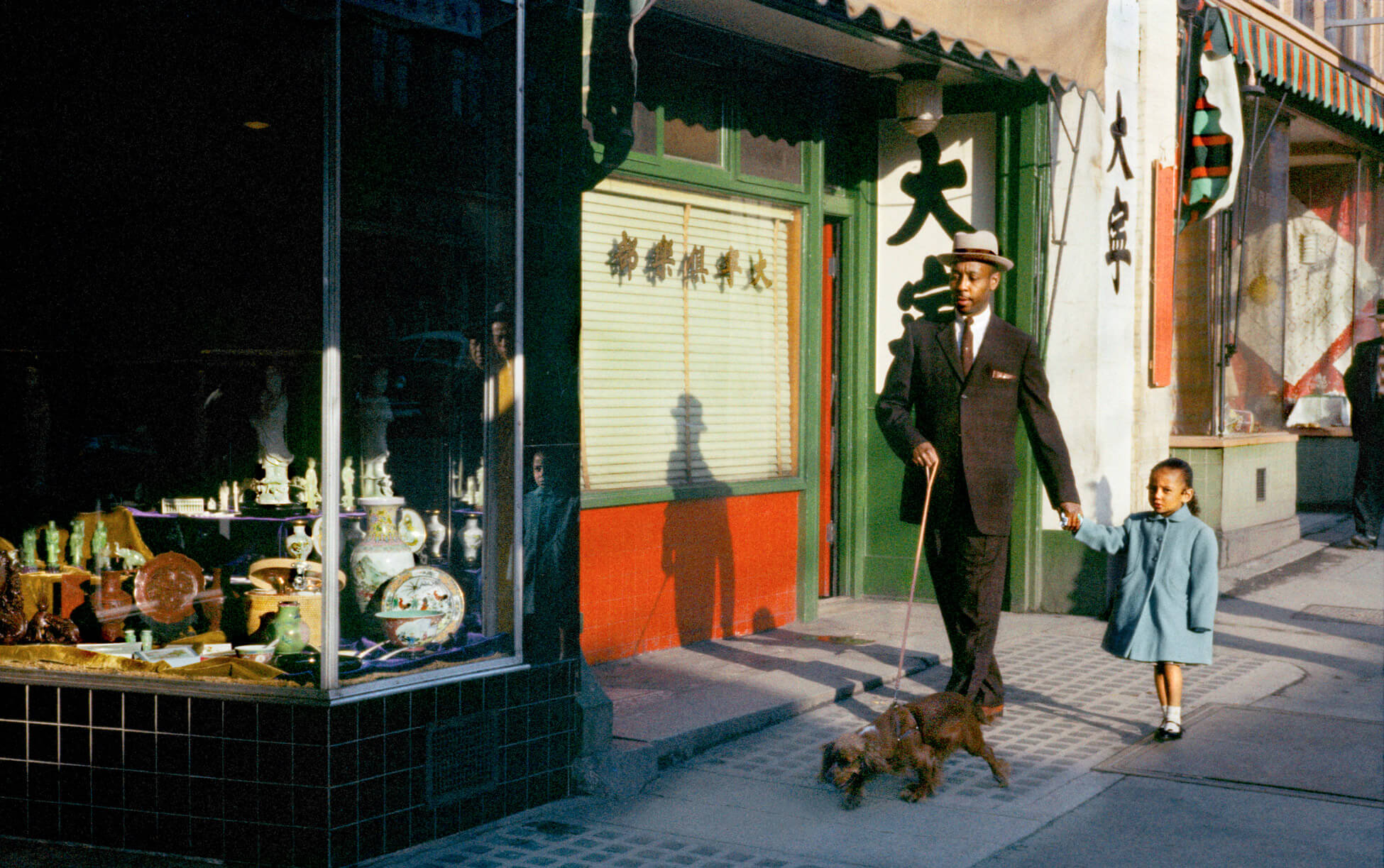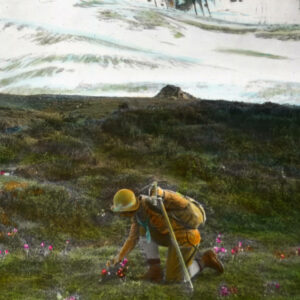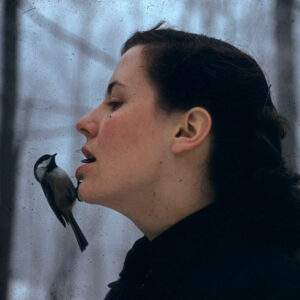Ulrich (Fred) Herzog (1930, Bad Friedrichshall, Germany–2019, Vancouver)

Boys on Shed, 1962, printed 2008
Inkjet print, 71.1 x 96.6 cm; image: 50.9 x 72.7 cm
National Gallery of Canada, Ottawa
With Boys on Shed, Ulrich Herzog, known as Fred Herzog (1930–2019), vividly captures a doomed wooden structure as well as a gaggle of children who have made it their playground. Herzog’s best-known photographs are colour images of Vancouver taken in the 1950s and 1960s. He made these primarily on a city route that he walked regularly, an urban landscape that was later razed to make way for the gleaming modern city. Though his work was not widely known until the 1990s, he has achieved critical recognition for his unusual use of colour in art photography in the mid-twentieth century, an important milestone in photography in Canada.
Born in Bad Friedrichshall, Herzog grew up in Germany, where his early life was shaped by the loss of his parents and the devastation of the Second World War. He immigrated to Canada in 1952. His experiences may have influenced him to make a comment many years later, which he then retracted, expressing doubts about the extent of the Holocaust.

Herzog inherited a camera and an interest in photography from an uncle before purchasing his own Kodak Retina, which he used avidly. After he immigrated to Canada, he lived briefly in Toronto where he met and worked with a medical photographer. Herzog read widely, poring over camera magazines and artists books while working on ships travelling from Vancouver before he secured a position as a medical photographer in 1957. In 1961, he took up a job as the head of the Department of Biomedical Communications at the University of British Columbia. Herzog held this position until his retirement in 1990 and occasionally taught photography, but his most important photographs were not from his professional oeuvre.
Using Kodachrome colour slide film in a Leica camera usually fitted with a wide-angle lens, Herzog composed cinematic photographs of the bustling streets and cityscapes. The slow film enabled him to capture poignant, often gritty details of Vancouver and its working-class inhabitants in images such as Black Man Pender, 1958. It was an approach sharpened by his encounter with Robert Frank’s book The Americans (1959) and, later, with the work of Walker Evans (1903–1975).
Herzog’s work was included in some group exhibitions throughout his career and he garnered recognition for his medical photography. But he was already in his seventies by the time digital printing technology offered him a way to adequately capture colour in prints from his 100,000 or so colour slides. With the assistance of a dealer, his work has received widespread national and international recognition in the form of exhibitions and books.

 About the Authors
About the Authors
 More Online Art Books
More Online Art Books
 Acknowledgements
Acknowledgements